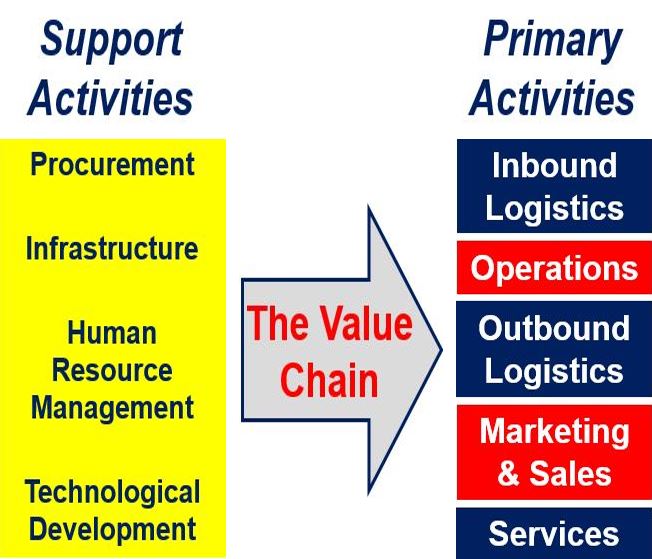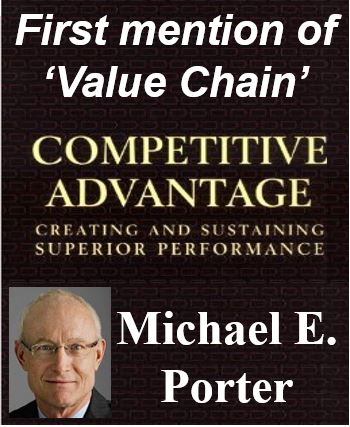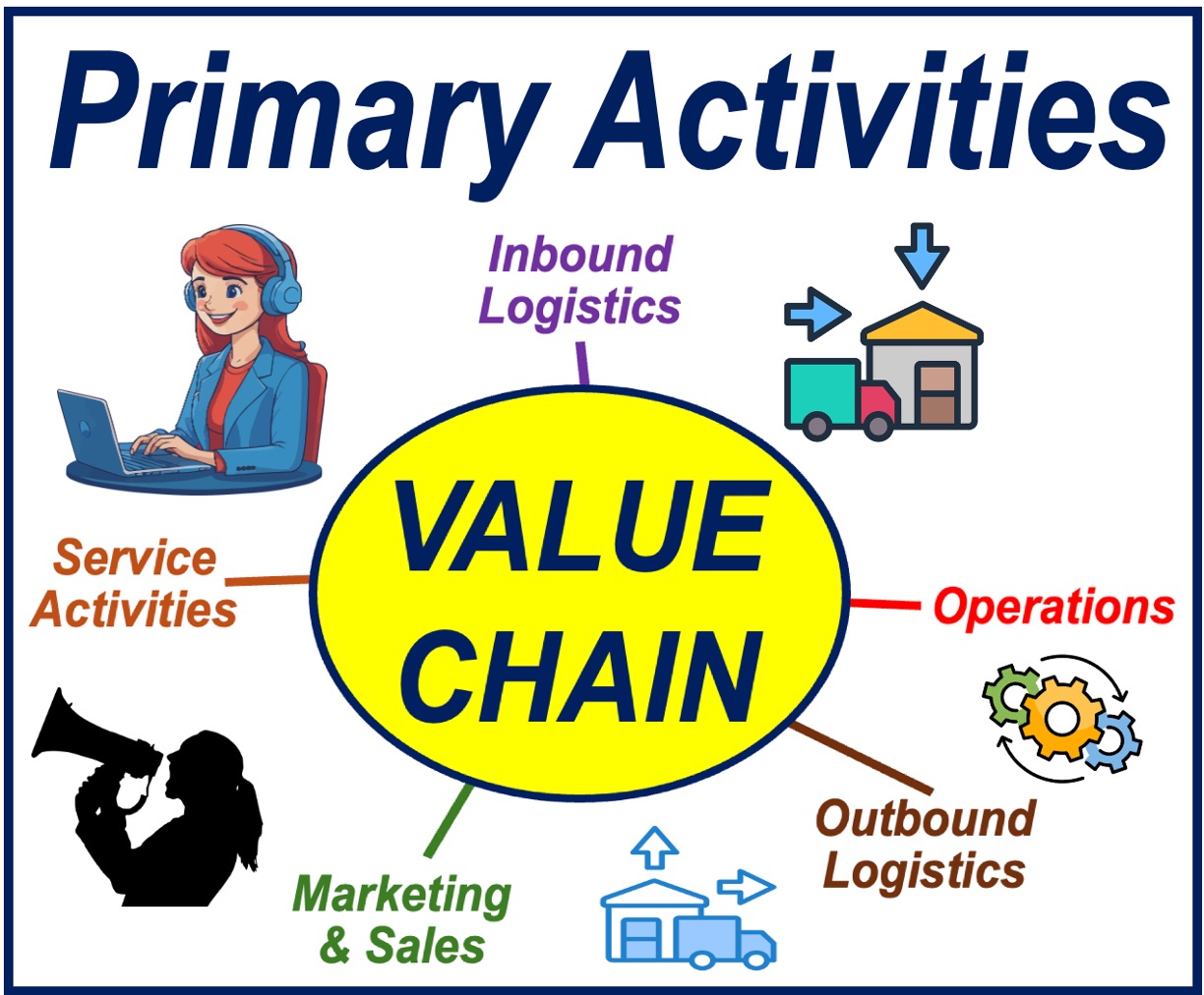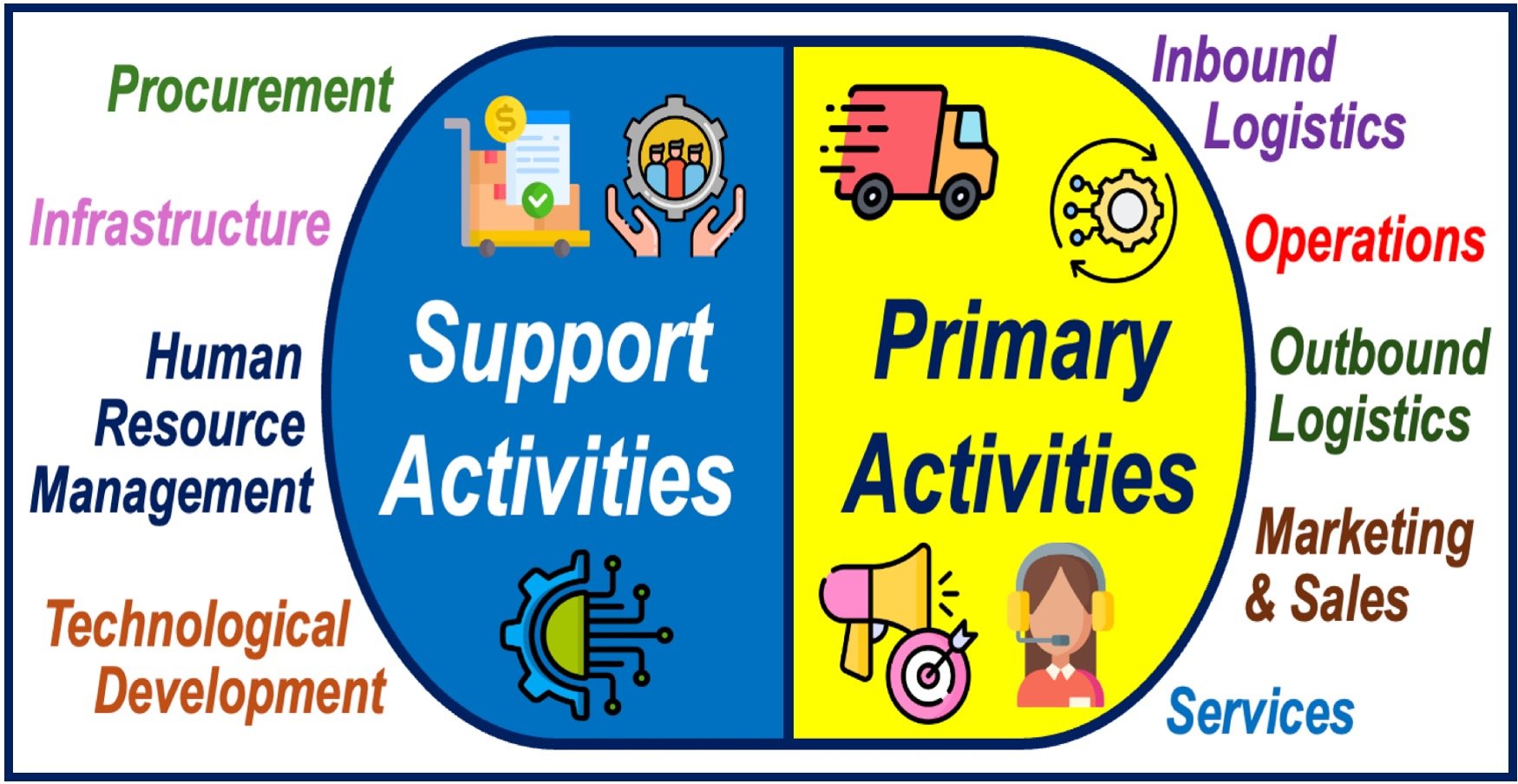Value Chain refers to all the activities undertaken by a company from initially purchasing raw materials and then manufacturing a product, to placing it on the market ready to be bought by consumers. All the value-adding activities in the value chain are interlinked, and are designed to make the best possible product or service, thus giving the commercial enterprise a competitive advantage in the marketplace.
Activities involved in a company’s value chain include those in the design, production, marketing and distribution of a product or service, as well as after sales service.
The term refers to everything a business goes through to bring a good or service from conception to delivery, and maintaining customer loyalty.
If a company produces goods, its value chain starts with the raw materials it uses to make its products, plus everything that is added to it before consumers purchase it.
Put simply, a value chain is the series of steps a business takes to turn raw materials or basic inputs into finished products—each step adding value along the way.
These activities, like designing, producing, marketing, and delivering a product, all work together to help the company make a profit and stand out from the competition. The better and more efficient the value chain, the stronger the company’s competitive advantage.

Origin of ‘value chain’
The concept originates from business management and was initially described and popularized by Michael Porter in his best-seller ‘Competitive Advantage: Creating and Sustaining Superior Performance’, published in 1985.
Michael Porter, the Bishop William Lawrence University Professor at Harvard Business School, is an American academic famous globally for his theories on business strategy, economics and social causes.

Value chain management is the process of organizing all those activities. Its goal is to make sure that within each stage, those in charge are liaising with each other, so that their product is being delivered to customers as rapidly and seamlessly as possible.
Primary activities of the value chain

The majority of organizations are involved in hundreds and perhaps thousands of activities in the process of converting raw materials into finished products (inputs into outputs). These activities may be classified generally as either Primary or Support activities.
There are five primary activities in adding value and building a competitive advantage. They are:
- Inbound Logistics: all receiving, warehousing and inventory management of raw materials ready for the production process.
- Operations: all efforts required to convert raw materials into a finished good or service.
- Outbound Logistics: occurs after all the operations are finalized and the end product is ready for the consumer – included are the activities required to deliver the product or service to the end user.
- Marketing & Sales: includes the strategies used to persuade potential consumers to buy a product or service.
- Services: the activities that help create an improved customer experience, such as repair and customer services.
Support activities for the value chain

Support activities that help improve a company’s competitive advantage include:
- Procurement: the acquisition of inputs (resources) for the company.
- Human Resource Management: everything to do with recruiting, hiring, training, developing, paying and (if needed) firing or laying off of workers.
- Technological Development: this is related to the equipment, hardware, computer software, procedures and technical knowledge used to help the company transform raw materials into finished products.
- Infrastructure: serves the needs of the company and links its various parts together, including functions or departments such as planning, public affairs, government relations, quality assurance, accounting, legal, finance and general management.
Value chain analysis
The aim of value chain analysis is to gain an edge over one’s competitors. In the world of business, it is both an essential and extremely valuable tool.

It is a process where companies identify their primary support activities that add value to their finished products, and then analyze each activity carefully to minimize costs and increase differentiation.
It represents a firm’s internal activities associated with transforming inputs into outputs – transferring what comes in (raw materials) to what goes out (finished products).
Value chain analysis relies on the fundamental economic principle of advantage – commercial enterprises are best served by operating in sectors and areas where they have a relative production advantage over their competitors.
In other words, by examining its internal activities, the analysis shows where a company’s competitive advantages and disadvantages are.
